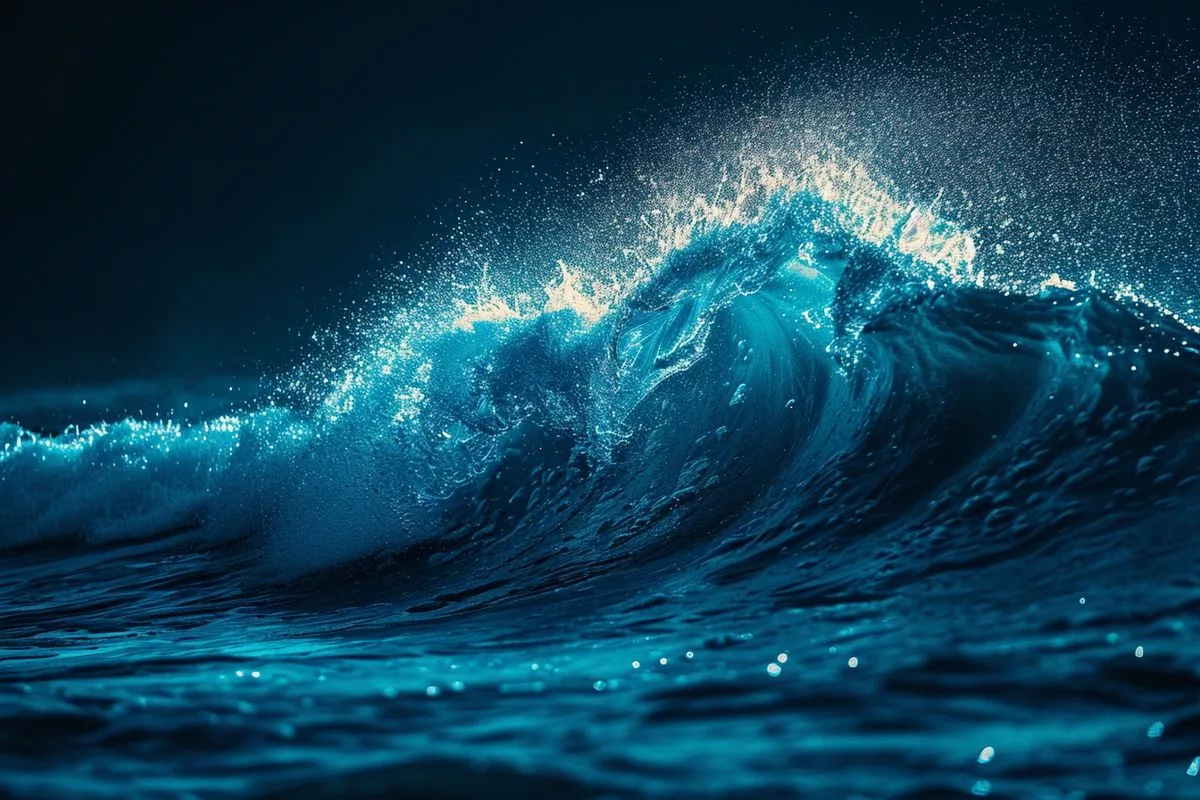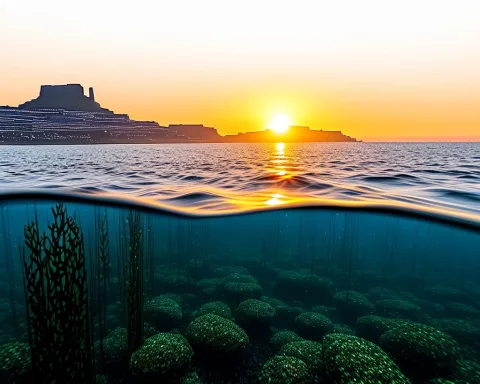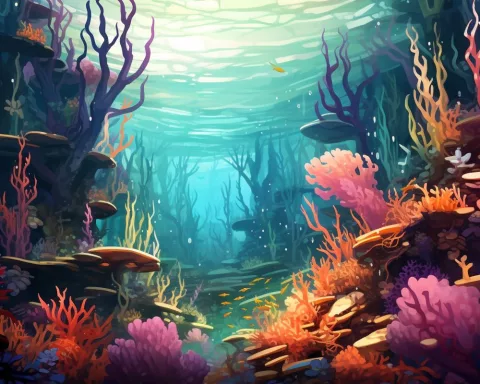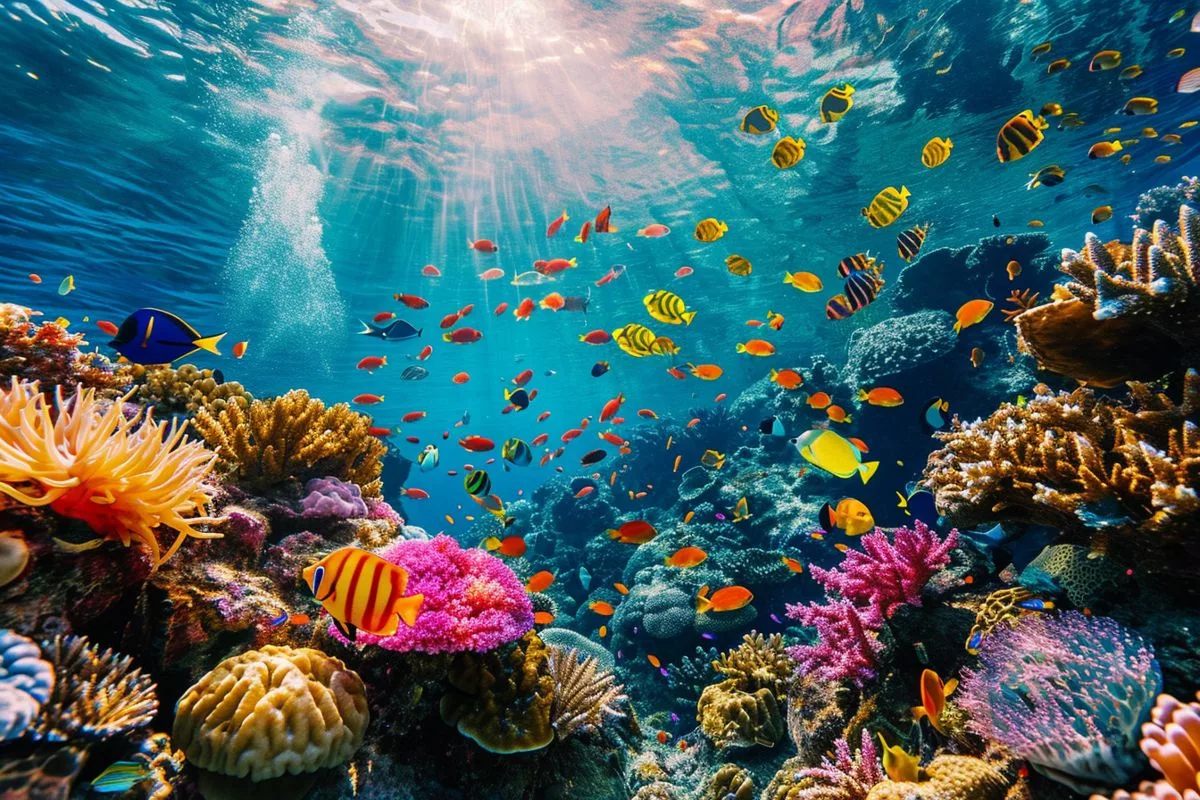The False Bay shoreline is currently lit up by a mesmerizing natural display known as bioluminescence. This spectacle is caused by the rapid growth of non-toxic algae, encouraged by tranquil and warm ocean conditions. The algae bloom not only enhances the visual charm of the coastline but also helps maintain equilibrium within the marine ecosystem by producing oxygen and consuming carbon dioxide. This harmless phenomenon is a testament to the enduring and diverse natural magnificence of the Earth.
What causes bioluminescence on the False Bay shoreline?
Bioluminescence on the False Bay shoreline is caused by the rapid growth of specific non-toxic algae, which is encouraged by tranquil and warm ocean conditions. The algae bloom not only enhances the visual charm of the coastline, but also contributes to maintaining equilibrium within the marine ecosystem by producing oxygen and consuming carbon dioxide. This event is completely harmless and a testament to Earth’s enduring and diverse natural magnificence.
As dusk envelops the False Bay coast, a fascinating act of nature comes alive, casting an ethereal sheen across the waves. An intriguing, radiant display of deep blue light illuminates the water’s edge creating an almost surreal vista. To the uninformed onlooker, this spectacle might seem alarming, even indicative of a radioactive contamination. But in reality, this natural phenomenon, known as bioluminescence or ‘sea sparkle’, is completely harmless per expert advice.
A renowned microbiologist and research fellow, Dr. Emma Rocke, from The Marine and Antarctic Research Centre for Innovation and Sustainability (MARiS) at the University of Cape Town, casts light on this marvel of nature. She attributes the bioluminescent spectacle to the rapid growth of specific algae encouraged by tranquil and warm ocean conditions.
Dr. Rocke is quick to dispel any fears about environmental damage. “Bioluminescence is a perfectly natural occurrence,” she explains, adding that the event is not only harmless, but also advantageous. This spectacle, which generally lasts for three to five days and occurs at least annually, is Mother Nature’s ingenious showcase.
The Algae Bloom: Balancing the Marine Ecosystem
The idyllic conditions of False Bay provide the perfect environment for these algae to thrive. As they multiply, the friction caused by their interaction triggers the captivating glow visible at twilight. Intriguingly, this algal bloom enhances not just the visual charm of the coastline, but also contributes to maintaining equilibrium within the marine ecosystem.
Dr. Rocke underlines the environmental importance of the algal bloom, stating, “They are producing oxygen and consuming carbon dioxide.” This algal explosion, being a primary producer in the food chain, draws a multitude of marine organisms, consequently increasing fish populations.
However, the algae’s proliferation has its limits. “They require light and nutrients for growth, which will eventually be depleted,” elaborates Dr. Rocke. Based on her initial assessments, she proposes that the algae species responsible for this bioluminescent spectacle is Noctiluca scintillans. This particular species is non-toxic, ensuring that the phenomenon is not only visually stunning, but also safe for both marine organisms and humans.
Bioluminescence and the Red Tide: Interconnected Natural Phenomena
Interestingly, the bioluminescence is intricately linked with another natural event known as the red tide. If the red tide is prominent during the day, and conditions remain consistent, the likelihood of experiencing the bioluminescent display after sunset significantly increases.
While the bioluminescent spectacle is undoubtedly mesmerizing, it is not exclusive to False Bay or even saltwater. This phenomenon occurs globally and can also manifest in freshwater bodies, reinforcing nature’s universal capacity for awe and wonder.
In conclusion, the bioluminescent display along the False Bay coastline is a beguiling dance of nature that goes beyond mere visual appeal. It serves as a crucial ecological mechanism that supports underwater life. Far from being a cause of concern, this phenomenon is a testament to Earth’s enduring and diverse natural magnificence. As we marvel at such wonders, let’s also take a moment to appreciate the delicate balance of nature that such events highlight.
How long does the bioluminescent display last on the False Bay shoreline?
The bioluminescent display on the False Bay shoreline generally lasts for three to five days and occurs at least once a year.
What causes the algae bloom on the False Bay shoreline?
The idyllic conditions of False Bay provide the perfect environment for the algae to thrive, which is encouraged by tranquil and warm ocean conditions. The algae bloom enhances not just the visual charm of the coastline, but also contributes to maintaining equilibrium within the marine ecosystem.
What species of algae is responsible for the bioluminescent display on the False Bay shoreline?
Based on initial assessments, the algae species responsible for this bioluminescent spectacle is Noctiluca scintillans, which is non-toxic, ensuring that the phenomenon is not only visually stunning, but also safe for both marine organisms and humans.
Is bioluminescence harmful to the environment?
Bioluminescence is a harmless phenomenon that contributes to maintaining equilibrium within the marine ecosystem by producing oxygen and consuming carbon dioxide.
What is the red tide, and how is it connected to bioluminescence on the False Bay shoreline?
The red tide is another natural event that is intricately linked with bioluminescence on the False Bay shoreline. If the red tide is prominent during the day, and conditions remain consistent, the likelihood of experiencing the bioluminescent display after sunset significantly increases.
Is bioluminescence exclusive to False Bay or saltwater?
No, bioluminescence occurs globally and can also manifest in freshwater bodies, reinforcing nature’s universal capacity for awe and wonder.












